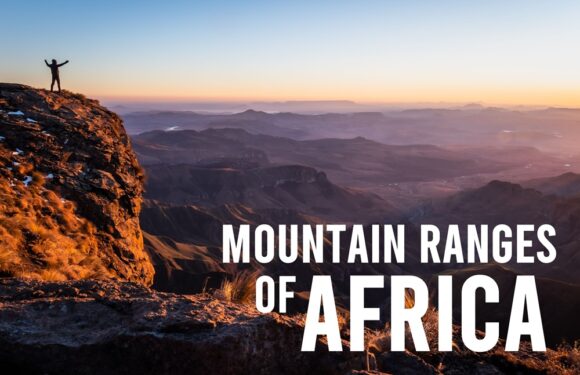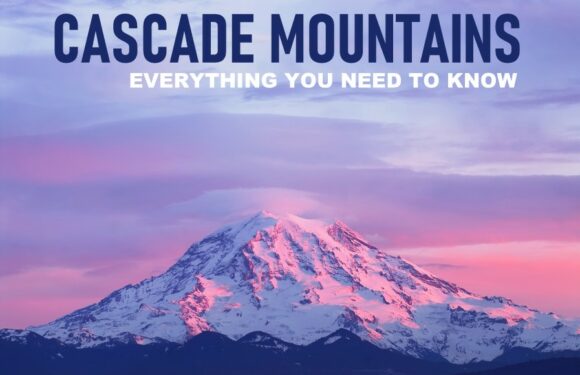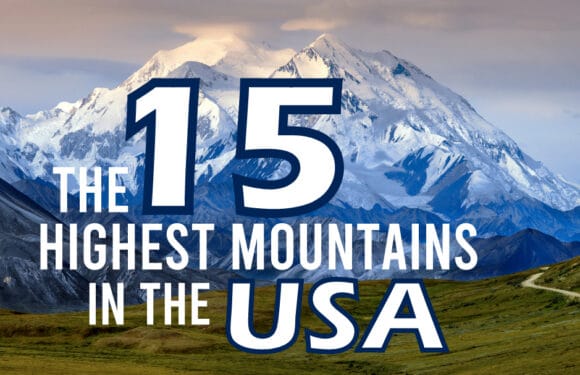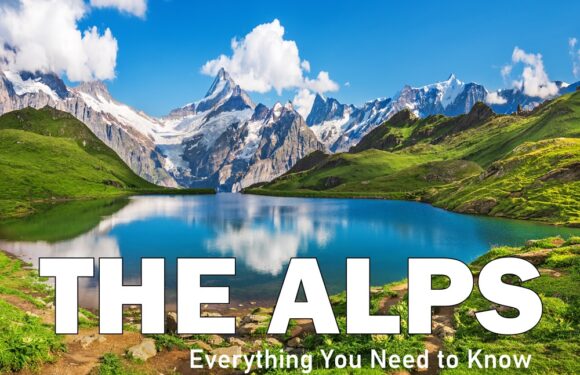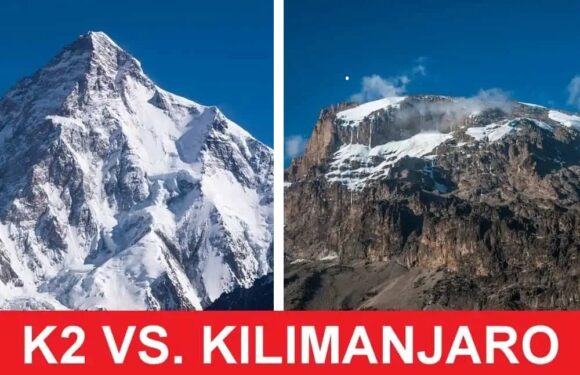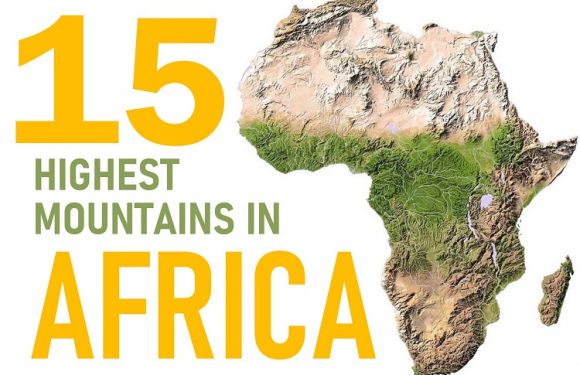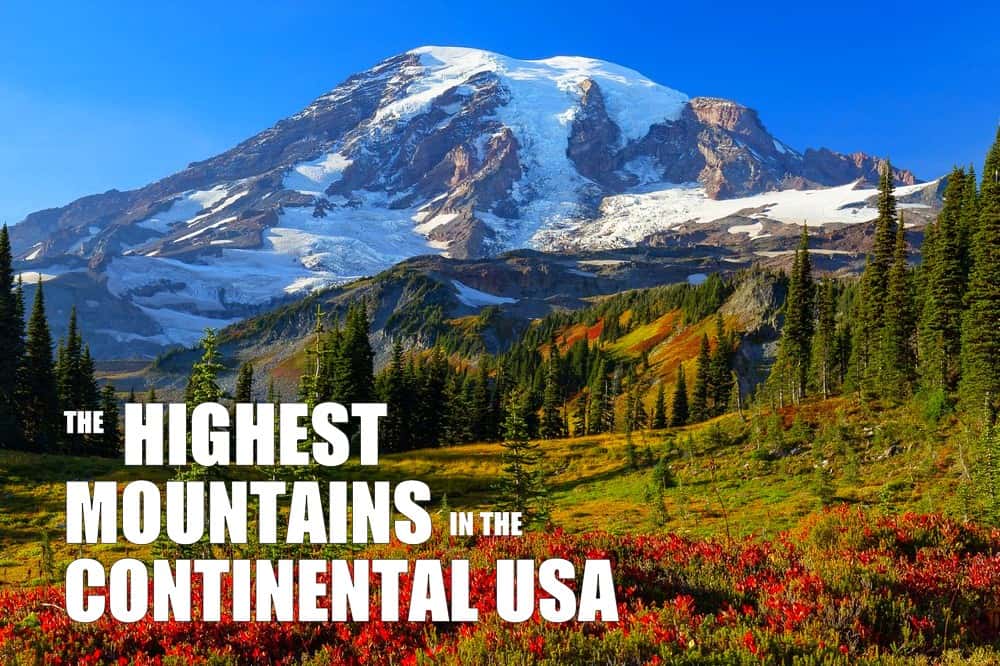
The mountains of the continental U.S. might seem modest compared to those located in Alaska. The state is home to North America’s highest peak, Denali. This mountain, which rises to an elevation of 20,310 feet (6,190 m), is much taller than Mount Whitney, the highest peak in the lower 48 states.
In fact, 13 out of the 15 tallest mountains in the USA are located in Alaska.
What Limits the Heights of Mountains in the Continental USA?
The continental U.S. is home to several major mountain ranges, including the Rocky Mountains, the Sierra Nevada, the Cascades, and the Appalachian Mountains. There are many reasons why the peaks in these ranges, in the lower 48 states, do not reach the heights of Alaska’s mountains.

Less Intense Tectonic Activity
Alaska’s mountains owe their lofty elevations to intense tectonic activity in the region. Located on the boundary of the Pacific and North American tectonic plates and on the coast, Alaska is subject to the forces that contribute to the rapid uplift and relatively high elevation of these mountains. In contrast, many of the continental U.S. mountain ranges, while affected by tectonic activity, are further from the intense action at the plate boundaries, resulting in less dramatic elevations.
Less Volcanic Activity
Alaska’s position along the Pacific Ring of Fire means it is subject to volcanic activity that can build mountain height rapidly. Volcanic mountains owe their elevation to the accumulation of volcanic materials. The volcanic regions of the continental US are not as active or extensive as those in Alaska.
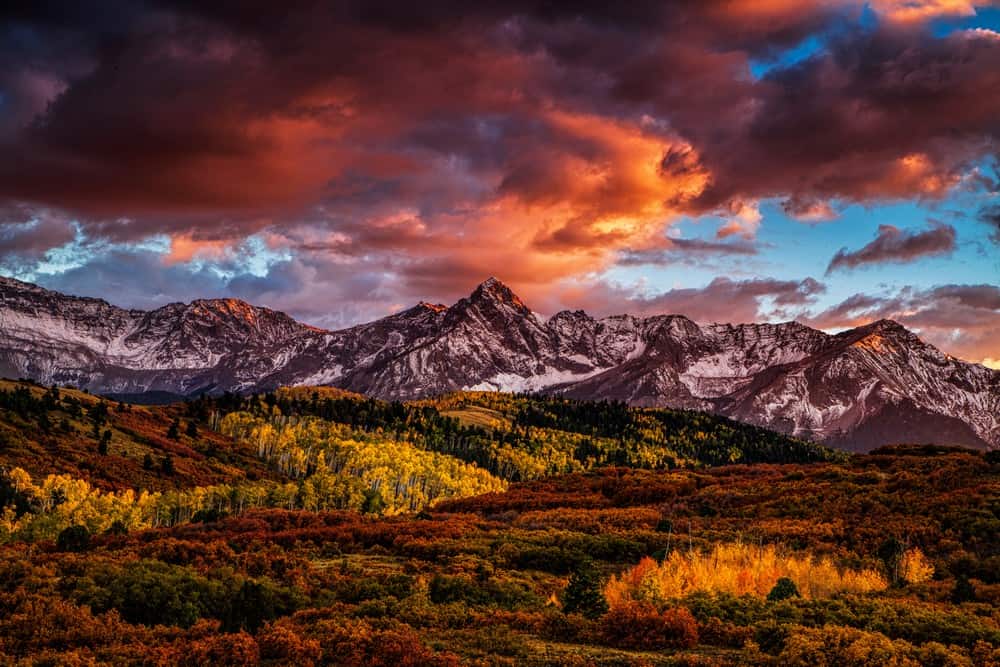
Older Age
The mountains in Alaska are relatively young in geological terms, formed during the Cenozoic era (the last 66 million years). Their youth means they have had less time to experience erosion, which gradually wears down mountain ranges. In contrast, many of the mountain ranges in the continental U.S., such as the Appalachians, are much older and have been subjected to extensive erosion over millions of years, reducing their height.
Alaska’s colder climate also slows down erosion rates, allowing mountains to maintain or even increase their height over time.
THE 15 TALLEST MOUNTAINS IN THE CONTINENTAL US
Here are the highest peaks in the USA, excluding Alaska:
1. Mount Whitney – 14,505 ft (4,421 m)
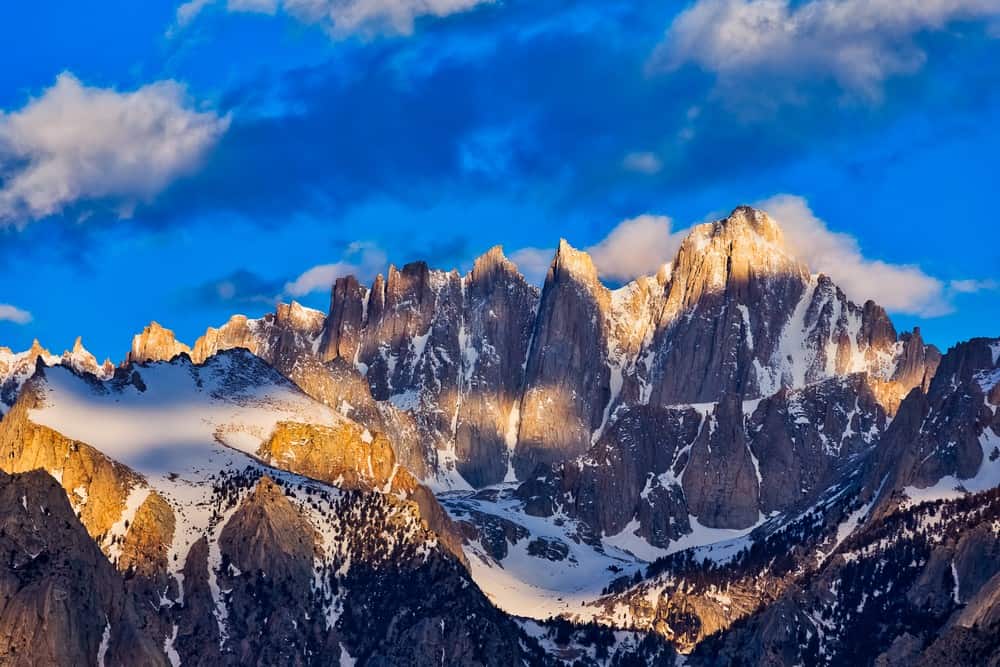
Mount Whitney is the tallest peak in the contiguous United States. Located in California, this mountain was named after Josiah Whitney, a trailblazer in American geology. Mount Whitney is over 100 million years old, formed by geological forces that lifted the Sierra Nevada. It’s made predominantly of a type of granite known as “Sierra Nevada Batholith.”
Due to its elevation and clear skies, Mount Whitney was the site of the highest astronomical observatory in the world in the early 20th century. The Smithsonian Institution Shelter was built for this purpose in 1909, but is now mainly as a shelter for climbers.
Beyond its height, Mount Whitney sits less than 85 miles from the lowest point in North America, Badwater Basin in Death Valley. This proximity between the highest and lowest points in the contiguous U.S. is unmatched anywhere else in the country, offering a dramatic contrast between alpine and desert environments within a relatively short distance.
2. Mount Elbert – 14,440 ft (4,401 m)
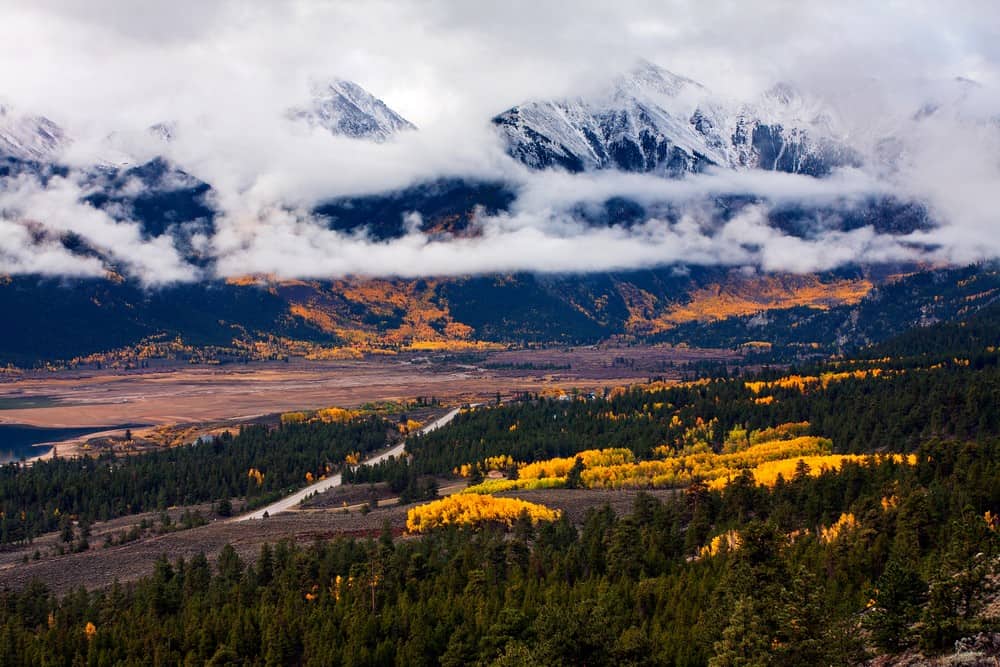
Mount Elbert is Colorado’s highest peak and second tallest peak in the continental USA. Part of the Rocky Mountains, this peak was once considered for the site of the Olympic Winter Games. Mount Elbert is frequented by wildlife, from the elusive lynx to the majestic elk. Near the base are the Twin Lakes, adored for their stunning beauty and clear, reflective waters.
Mount Elbert was named after Samuel H. Elbert, a former governor of the territory who never set foot on its slopes. Interestingly, Mount Elbert is often considered one of the more accessible of the high peaks, making it a favorite first “fourteener” (peaks over 14,000 feet) for many climbers.
3. Mount Massive – 14,428 ft (4,398 m)

The aptly named Mount Massive is part of the Rocky Mountains. It stretches across the Colorado skyline. The area around this giant Mount Massive was once the hunting grounds for the Ute people. The rare Colorado blue columbine, the state flower, can be found blooming in the meadows each summer. Beyond its physical attributes, Mount Massive shares a unique relationship with its neighbor, Mount Elbert, often sparking friendly debates among climbers about which peak presents the better climb.
4. Mount Harvard – 14,420 ft (4,395 m)
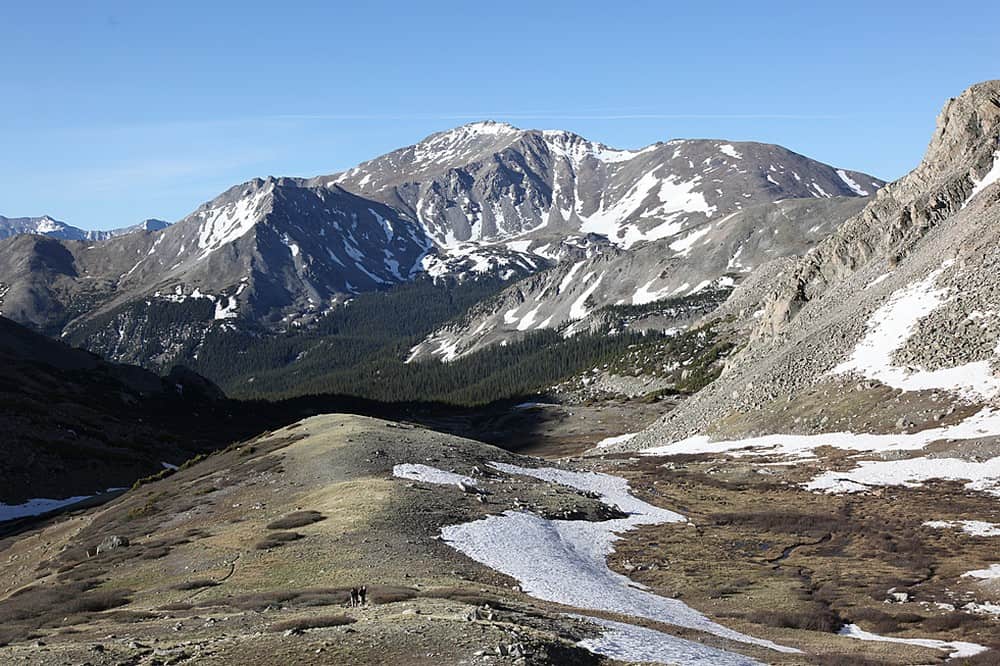
Mount Harvard is the third highest peak in the Rocky Mountains of Colorado, nestled within the Collegiate Peaks of the Sawatch Range. Named in 1869 after the prestigious Harvard University, this mountain is adorned with wildflowers during the summer months. Lupines, columbines, and paintbrushes fill the landscape with vibrant colors. During the winter months, Mount Harvard transforms into a snowy wonderland, attracting backcountry skiers and snowshoers.
5. Mount Rainier – 14,411 ft (4,392 m)
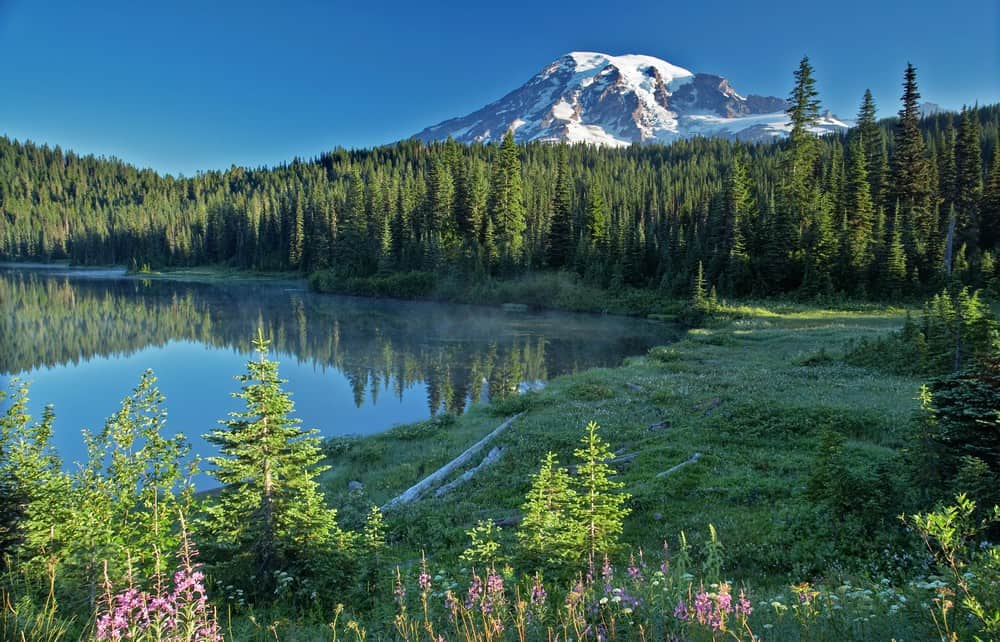
Mount Rainier of Washington State symbolizes the Pacific Northwest’s wild, untamed beauty. It is home to the largest glacier system in the contiguous U.S., with the Emmons Glacier being the largest single glacier. In total, there are 26 major glaciers on Mount Rainier, covering 35 square miles (90 square kilometers).
Rainier is known for its extreme weather patterns, including sudden storms and heavy snowfall. It holds the record for the most snow ever measured in one season in the U.S., with 93.5 feet (28.5 meters) during the winter of 1971-1972.
As an active stratovolcano, it is considered one of the most dangerous volcanoes in the world due to its proximity to populated areas. It’s part of the Pacific Ring of Fire and last erupted in the 19th century.
Mount Rainier was named in 1792 by British explorer Captain George Vancouver in honor of his friend, Rear Admiral Peter Rainier. However, local Native American tribes have known it by many names, including “Tahoma,” meaning “mother of waters.”
6. Mount Williamson – 14,379 ft (4,383 m)
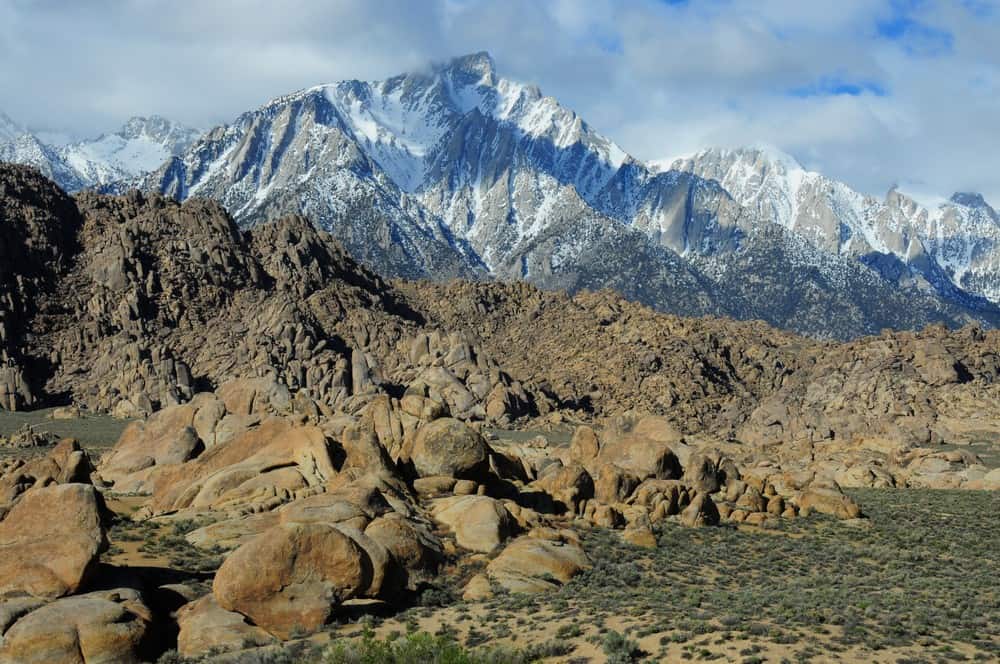
In the shadow of Mount Whitney lies Mount Williamson. As California’s second-highest peak, it stands as a monument to the explorers who ventured into the West. The mountain is located within the John Muir Wildernessand is part of the Sierra Nevada batholith, a vast and ancient granite formation that spans much of the range. On the mountain’s eastern side lies a vast cirque known as the Williamson Bowl, filled with a series of tarns and talus slopes. This natural amphitheater, carved by glaciers, is a highlight for those exploring the mountain’s rugged landscapes. The mountain was named for Lieutenant Robert Stockton Williamson.
7. Blanca Peak – 14,351 ft (4,374 m)
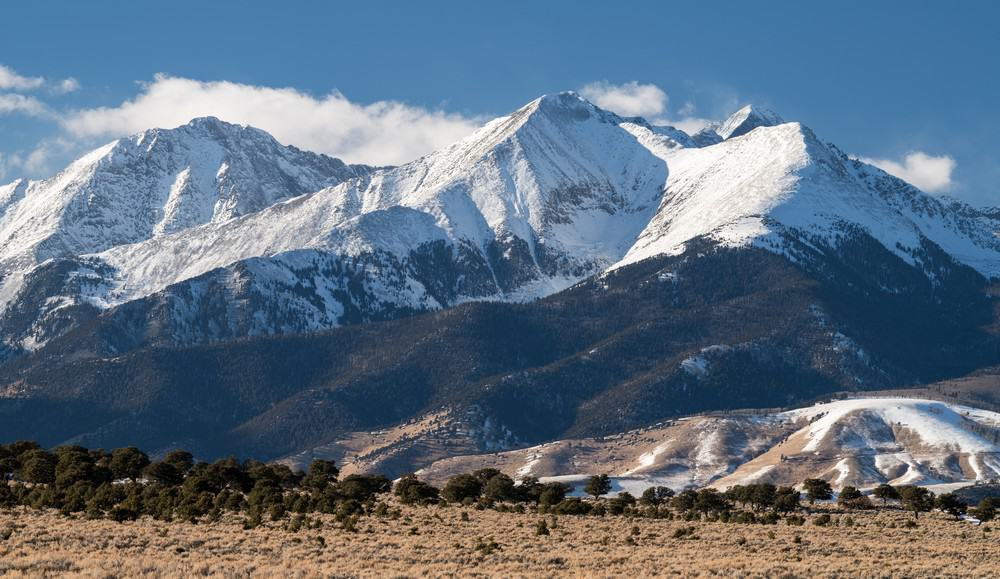
Blanca Peak is the highest peak within Colorado’s Sangre de Cristo Range. The mountain is considered sacred by the Native American tribes in the region, particularly the Navajo, who refer to it as “Sisnaajiní,” or the “Dawn” or “White Shell” Mountain. It is one of the four sacred mountains that mark the traditional boundaries of Navajoland. The name “Blanca” is derived from the Spanish word for “white,” a nod to the snow-capped summit that gleams under the Colorado sun.
8. La Plata Peak – 14,336 ft (4,370 m)
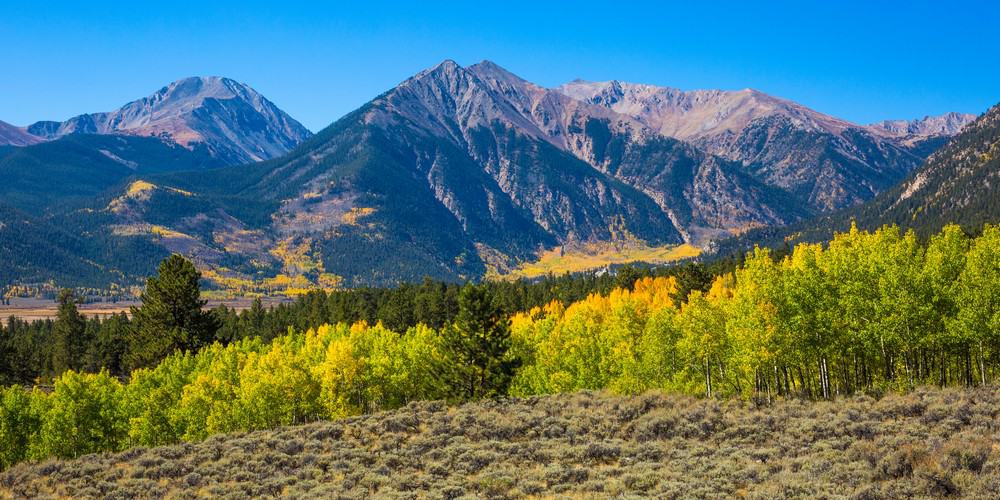
La Plata Peak is part of the Collegiate Peaks in Colorado’s Sawatch Range. Its name, translating to “The Silver” in Spanish, hints at the region’s rich mining history. The pursuit of silver brought prospectors and adventurers to the heart of the Rockies, dreaming of fortune and discovery. The first recorded ascent of La Plata Peak was in 1873, marking it as one of the early explored peaks in Colorado’s history. One of La Plata Peak’s most notable features is the Ellingwood Ridge, named after Albert Ellingwood, a pioneering mountaineer.
9. Uncompahgre Peak – 14,321 ft (4,365 m)
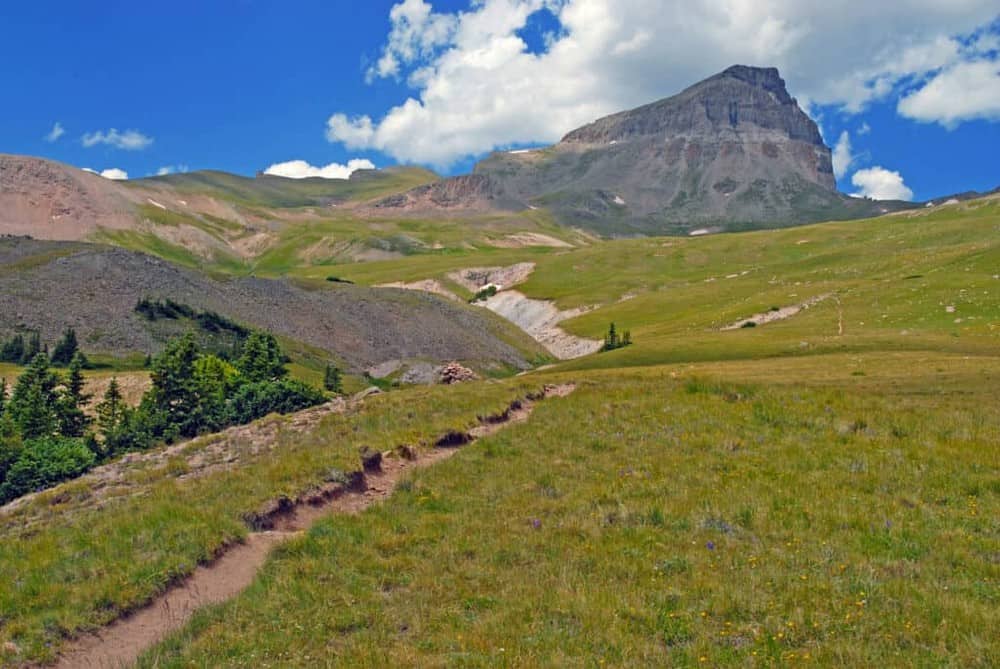
Uncompahgre Peak is the highest point in the San Juan Mountains and the sixth highest peak in Colorado. Its distinctive shape, marked by a broad, flat top, sets it apart from other peaks in the Rockies. This profile is the result of its formation as a volcanic caldera, which then eroded over millions of years. The name Uncompahgre comes from the Ute language, meaning “rocky water,” in reference to the mountain’s rugged terrain and the wild rivers.
10. Crestone Peak – 14,300 ft (4,359 m)
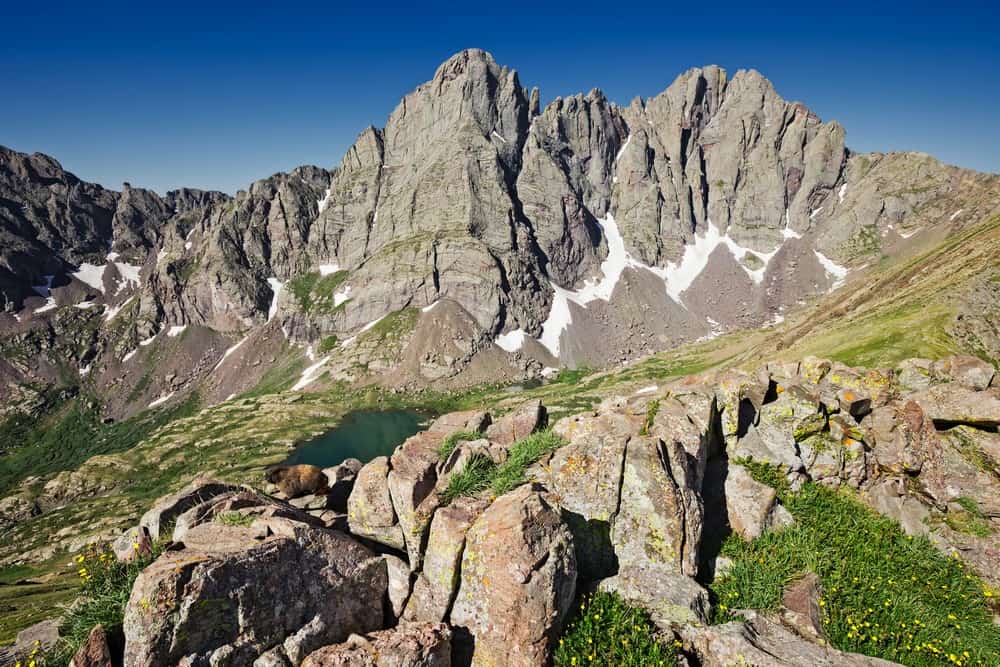
Crestone Peak emerges from the Sangre de Cristo Range. The mountain’s name comes from the town of Crestone, located at its base. The town was named after a group of peaks known as the Crestones. These mountains are distinctive, rugged conglomerate rock formations composed of quartzite and sandstone, give the mountain its unique, jagged appearance. “Crestone” is believed to be derived from the Spanish word “crestón,” meaning “the top” or “summit.” The first recorded ascent of Crestone Peak was in 1916 by Albert Ellingwood and Eleanor Davis.
11. Mount Lincoln – 14,293 ft (4,357 m)
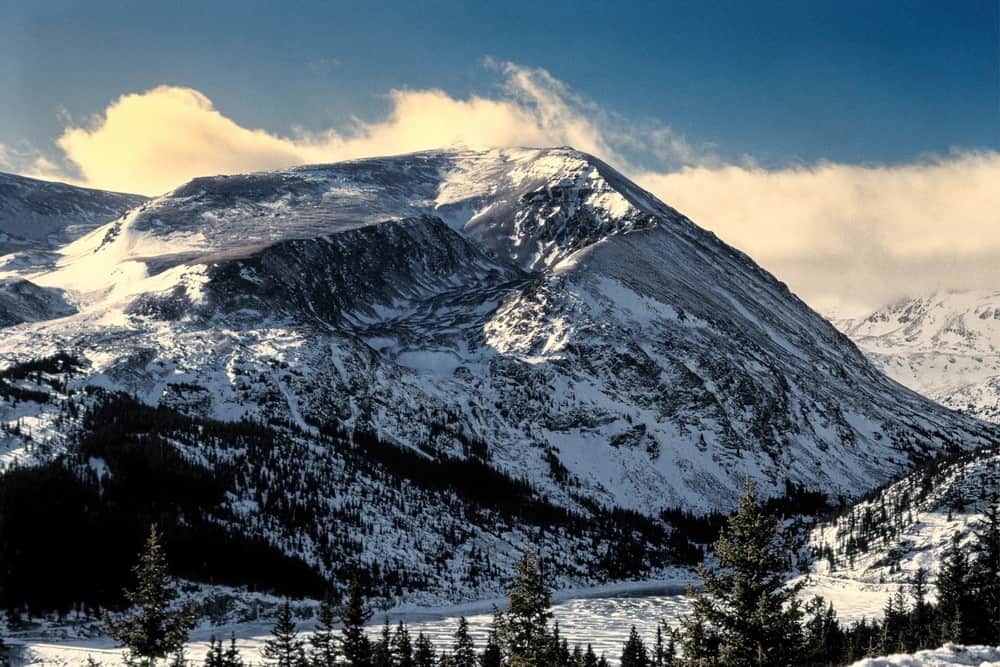
Mount Lincoln is named in honor of Abraham Lincoln, the 16th President of the United States. The area surrounding Mount Lincoln was once bustling with mining activity, particularly during the Colorado Silver Boom in the late 19th century. The mountain itself is dotted with remnants of this era, including abandoned mines and ghost towns. This peak is part of the famous DeCaLiBron loop, which includes the summits of Democrat, Cameron, Lincoln, and Bross.
12. Castle Peak – 14,279 ft (4,352 m)
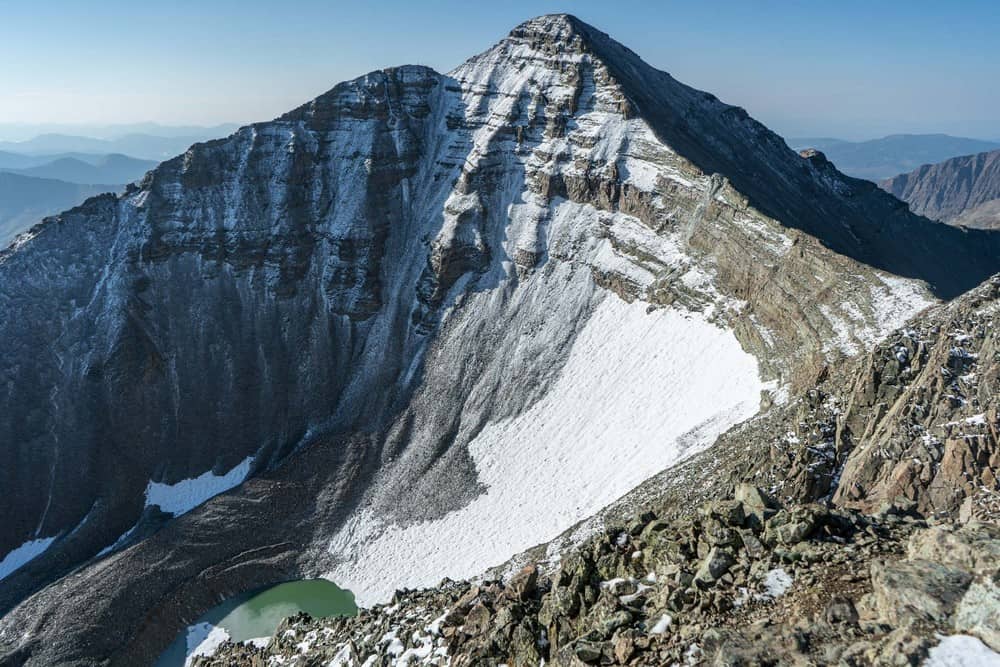
Castle Peak is the highest peak in the Elks Mountains of Colorado. It is named for its castle-like spires and buttress-like rock formations. It also boasts several small glaciers and permanent snowfields, remnants of the last Ice Age. Castle Peak is surrounded by the famous Maroon Bells-Snowmass Wilderness. With its striking silhouette and breathtaking surroundings, Castle Peak is a favorite subject for photographers. The mountain’s changing moods, from the golden hues of sunrise to the alpenglow at sunset, offer endless inspiration for capturing the beauty of the Colorado Rockies.
13. Grays Peak – 14,278 ft (4,352 m)

Grays Peak is a landmark in the Front Range of Colorado. This peak straddles the Continental Divide, serving as a natural divide between the waters flowing into the Atlantic and Pacific Oceans. It also shares a saddle with Torreys Peak (#15 on this list), allowing adventurers to summit two fourteeners in a single day. Grays Peak was named in honor of Asa Gray, a renowned 19th-century American botanist. Gray’s contributions to science and his friendship with the explorer Charles Christopher Parry, who first ascended the peak in 1861, are commemorated through this lasting tribute.
14. Mount Antero – 14,276 ft (4,351 m)

This mountain in Colorado’s Sawatch Range bears the name of Chief Antero of the Uintah band of the Ute tribe. It is known for its abundance of aquamarine gemstones, the largest deposits in North America. These gemstones, along with other minerals like smoky quartz and topaz, draw prospectors and collectors from around the world who are eager to explore its rich mineral fields. Meanwhile, the road to Mount Antero attracts off-roading enthusiasts looking to test their skills against one of the highest four-wheel drive roads in North America.
15. Torreys Peak – 14,267 ft (4,348 m)

Last on this list is Torreys Peak, part of Colorado’s Front Range. Named in honor of John Torrey, a 19th-century scientist who has been referred to as America’s first botanist. Due to its easy hiking trail and its proximity to the Denver metro area, this peak is one of Colorado’s most popular 14ers. The Kelso Ridge route is a more advanced path that includes class 3 scrambles, exposure, and knife-edge traverses. Its close proximity to Grays Peak (#13 on this list) allows hikers to summit both in a day




















































